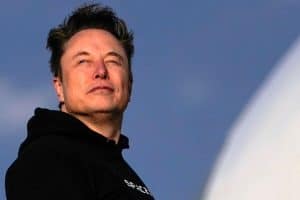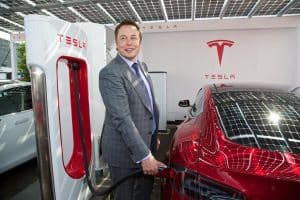Tesla is grappling with a “perfect storm” of challenges: its stock is sliding, profits are shrinking, and angry protests — including some dramatic showroom fires — are erupting across the globe. With the pressure mounting, analysts are asking a key question: how far does Tesla stock need to fall before Elon Musk re-engages fully with the company?
Investors got a partial answer today when Tesla released its Q1 financial results. At the start of the earnings call, Musk stated that beginning next month, he plans to spend more time at Tesla, devoting just a few days each week to his government advisory project — the so-called “Ministry of Government Efficiency” — if the president still wants him involved. Tesla shares ticked up modestly in after-hours trading.

There’s no denying that Musk’s other high-profile commitments, particularly to his controversial Doge-focused initiatives, have weighed on Tesla’s market performance. Since peaking after the last election, Tesla has lost more market value than any U.S.-listed company except Apple and Nvidia — both of which are significantly larger.
Today, Tesla is valued at around $750 billion — a figure not supported by car sales alone. Instead, much of that valuation reflects investor faith that Musk can pull off another technological miracle. That belief hinges on him having the time and focus to make it happen.
Meanwhile, geopolitical factors and public unease over Musk’s increasingly political persona are adding to the tension. Tesla’s EV revenue dropped 20% last quarter — a hit attributed partly to factory restructuring, but also to waning consumer demand.

Even die-hard investors are starting to lose faith. Investment firm Wedbush Securities recently slashed its Tesla price target by over 40%, warning that Musk’s distractions — particularly his involvement in Doge — may have already eroded 20% of Tesla’s future demand.
So, does Musk actually care about the company’s declining stock price? You’d think so — his Tesla shares are still worth nearly $100 billion. But with his roughly 40% stake in SpaceX now valued at around $150 billion, he may have the luxury of being less concerned.
Still, Musk has not committed to returning to Tesla full-time. He claims his work with DOGE is part of a broader mission to “save America from bankruptcy.”
Musk has always been future-focused — sometimes at the expense of the present. That hasn’t changed. He still envisions a future where Tesla builds millions of humanoid robots (known as Optimus) and where autonomous Teslas moonlight as robotaxis, earning passive income for owners.

During the shareholder meeting, Musk doubled down on that vision, claiming Tesla could one day be worth more than the combined value of the top five U.S. companies — currently totaling about $11 trillion.
So, will shareholders get Musk’s undivided attention any time soon? Probably not. Even Trump’s new tariffs are being scrutinized more by the bond market than the stock market, as investors worry about their impact on federal funding.
For now, Musk doesn’t have to stress too much about Tesla’s finances. The company holds over $35 billion in cash against just $7 billion in debt. But at some point, he may need to raise significant capital. He’s floated the idea that training Optimus could require as much as half a trillion dollars — a figure that would force the market to scrutinize how he spends his time.
Until then, Musk seems content to glance at the stock ticker — and keep moving forward.




